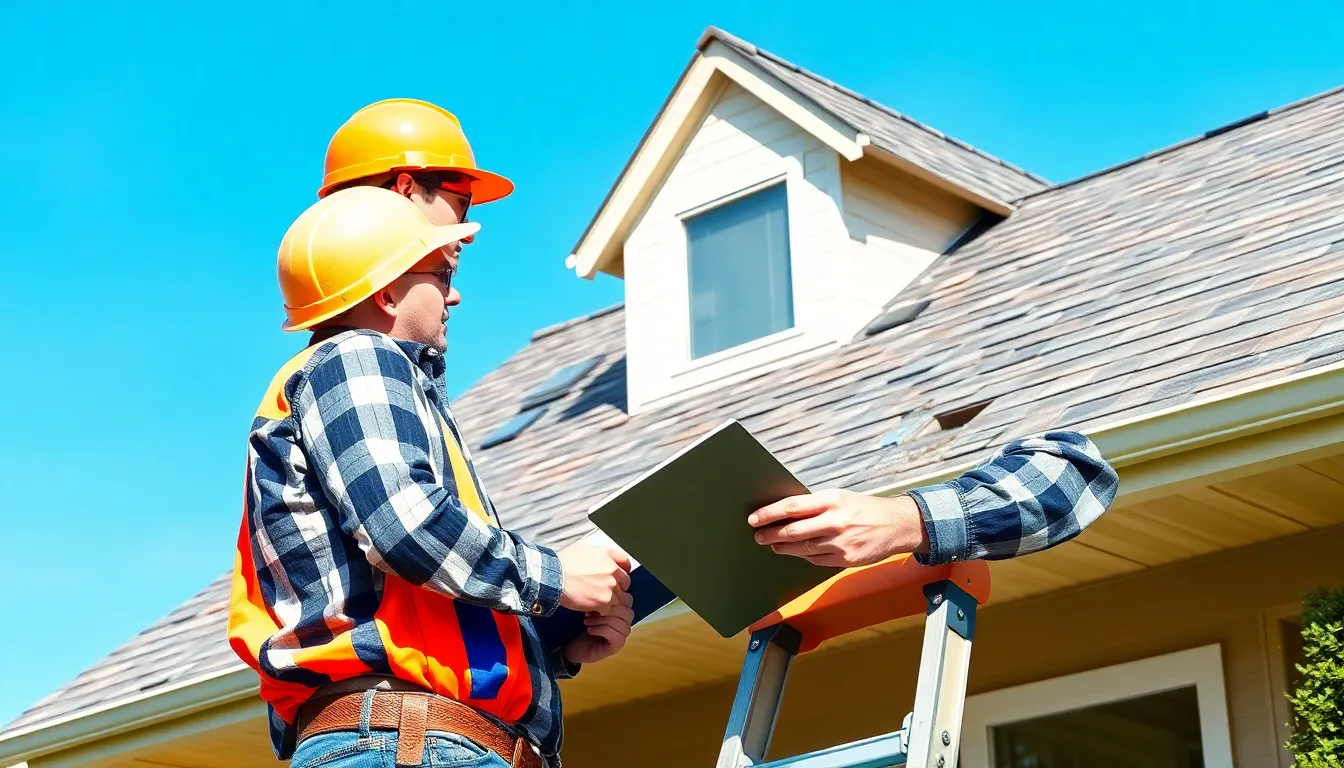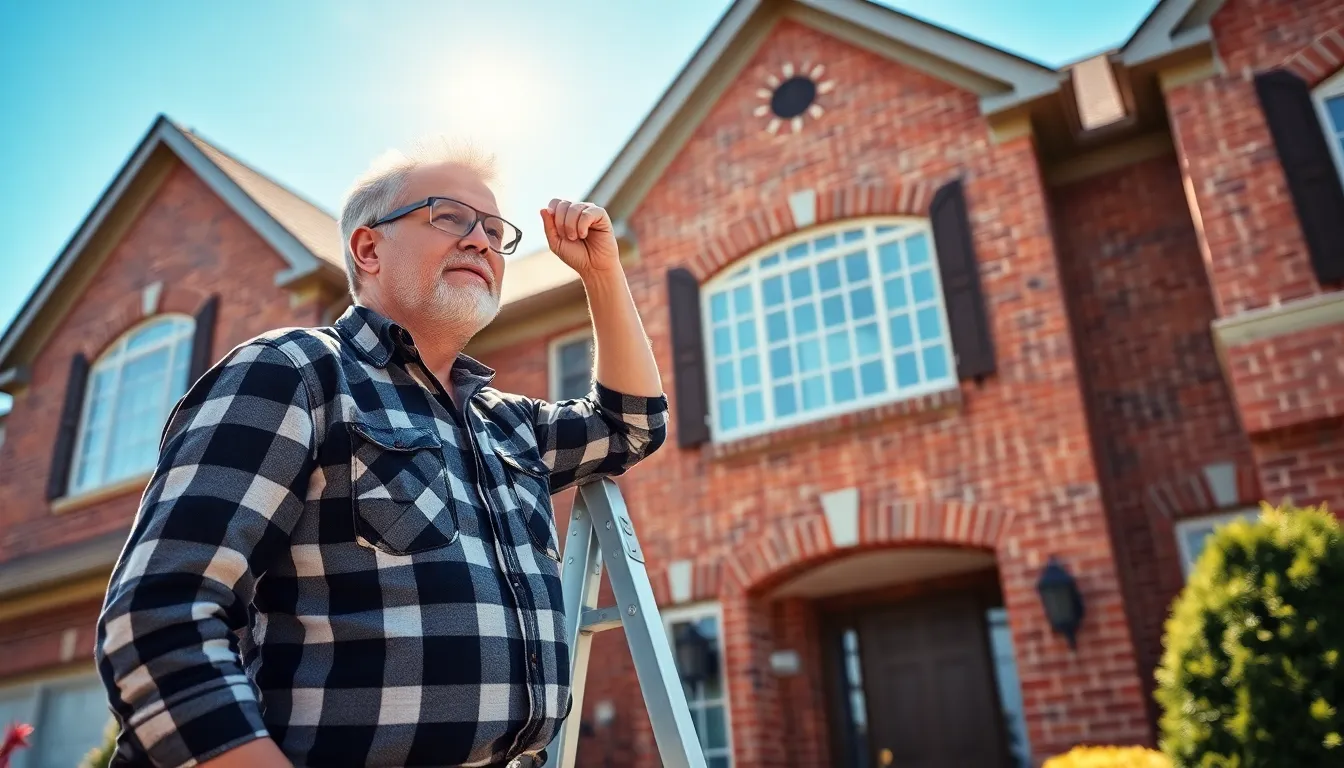When it comes to property maintenance, an exterior inspection is essential. This process involves a thorough evaluation of a building’s outer elements, ensuring everything from the roof to the foundation remains in good condition. Regular inspections can help identify potential issues before they escalate, saving homeowners both time and money.
Understanding the importance of exterior inspections goes beyond just aesthetics. It plays a crucial role in maintaining safety and structural integrity. Whether it’s checking for cracks, assessing paint condition, or inspecting drainage systems, a detailed exterior inspection can prevent costly repairs down the line. By prioritizing this practice, property owners can protect their investments and enhance the longevity of their homes.
Table of Contents
ToggleImportance Of Exterior Inspection
Regular exterior inspections play a critical role in maintaining the integrity and value of properties. These evaluations address safety, durability, and long-term investment protection.
Benefits To Homeowners
Homeowners benefit significantly from routine exterior inspections.
- Early Issue Detection: Identifying problems like roof damage or foundation cracks prevents costly repairs and maintains property value.
- Enhanced Safety: Discovering hazards, such as loose railings or compromised walkways, improves safety for residents and guests.
- Informed Decision-Making: Gaining insights into exterior conditions allows homeowners to prioritize repairs effectively and budget accordingly.
- Increased Curb Appeal: Maintaining the exterior ensures an attractive property, boosting overall market value and neighborhood aesthetics.
Benefits To Real Estate Agents
Real estate agents gain important advantages from conducting exterior inspections.
- Accurate Property Valuation: Understanding the condition of the exterior helps agents set realistic prices for listings, attracting potential buyers.
- Enhanced Marketing Strategy: Highlighting inspections in marketing materials builds trust with clients, showcasing due diligence and professionalism.
- Negotiation Power: Insight into the property’s condition equips agents to negotiate better terms, especially addressing repair concerns before a sale.
- Client Satisfaction: Ensuring clients receive well-maintained properties fosters positive relationships and encourages referrals in the competitive real estate market.
Key Components Of Exterior Inspection

Exterior inspections encompass several critical components essential for maintaining property integrity. An effective assessment covers the roof, walls, windows, and doors.
Roof Inspection
Roof inspections focus on identifying damage, deterioration, or weaknesses in roofing materials. Inspectors evaluate shingles for wear, spot missing or broken pieces, and check for signs of leaks, such as water stains on ceilings. They assess flashing around vents and chimneys to ensure proper sealing. On average, a roof inspection occurs every one to three years, depending on climate and roof type.
Wall Inspection
Wall inspections target the building’s exterior surfaces, ensuring they remain structurally sound and free from damage. Inspectors examine siding for cracks, warping, or rot. They check for mold growth, especially in areas with frequent moisture exposure. Inspectors pay attention to drainage systems and the condition of foundation walls, as drainage issues can lead to significant structural problems. Regular inspections of walls help maintain the property’s aesthetic appeal and prevent expensive repairs.
Window And Door Inspection
Window and door inspections assess their functionality and weatherproofing performance. Inspectors check for broken seals, which affect energy efficiency and contribute to drafts. They inspect frames for damage, rot, or warping that could compromise security. Proper functionality, including easy opening and closing mechanisms, also factors into the assessment. Inspecting windows and doors regularly ensures a comfortable living environment and reduces energy costs.
Common Issues Found During Exterior Inspections
Exterior inspections often reveal various issues that can impact a property’s safety and longevity. Identifying these common problems early helps in devising effective solutions.
Structural Problems
Structural problems, such as cracks in the foundation or walls, pose significant risks. Settling or shifting of the foundation may occur due to poor soil conditions or drainage issues. Signs of structural problems include bowing walls, cracked floors, and uneven surfaces. Addressing these issues promptly prevents further damage and costly repairs.
Moisture Damage
Moisture damage frequently manifests as water stains, mold growth, or rotting materials. Roof leaks, clogged gutters, and improper drainage can contribute to moisture accumulation. Homes in areas with high humidity are especially susceptible. Effective inspection identifies these issues early, reducing risks to both health and property integrity.
Pest Infestation
Pest infestations often compromise exterior structures, particularly in wooden elements. Termites, carpenter ants, and other pests can weaken framing and structural supports over time. Signs of infestation include holes, frass (insect droppings), and damaged wood. Regular inspections help detect pest problems early, allowing for timely intervention and prevention of extensive damage.
Best Practices For Conducting An Exterior Inspection
Conducting a thorough exterior inspection requires specific tools and a systematic approach. Following best practices ensures a comprehensive evaluation, leading to timely identification of potential issues.
Tools And Equipment Needed
- Ladder: A sturdy ladder allows access to roof areas and upper stories for detailed inspections.
- Flashlight: A bright flashlight helps reveal issues in darker areas such as attics or under eaves.
- Moisture Meter: A moisture meter measures the moisture content in surfaces, identifying potential areas of water damage.
- Level: A level tool checks for structural alignment, helping to detect settlement issues or foundation problems.
- Caulking Gun: A caulking gun is useful for applying sealants in areas around windows, doors, and joints.
- Camera: A camera captures visual evidence of any deficiencies for documentation and future reference.
Steps To Follow
- Assess the Roof: Inspect for missing or damaged shingles, signs of leaks, and condition of flashing.
- Examine Walls: Look for cracks, peeling paint, and signs of moisture damage.
- Check Windows and Doors: Ensure they open and close smoothly, and inspect seals for any gaps or deterioration.
- Inspect the Foundation: Search for visible cracks, settling, or signs of water pooling near the foundation.
- Review Gutters and Downspouts: Ensure they are clear of debris and functioning to direct water away from the structure.
- Look for Pests: Identify any signs of pest infestations, including nests or damage to wooden structures.
- Record Findings: Document all observations with notes and photographs to track issues for future inspections or repairs.
Regular exterior inspections are essential for maintaining the overall health and longevity of a property. By identifying potential issues early homeowners can save on costly repairs and enhance their property’s value. These inspections not only ensure safety but also improve aesthetic appeal and energy efficiency.
For real estate agents understanding a property’s exterior condition is key to effective marketing and accurate valuation. Armed with this knowledge they can better serve their clients and foster lasting relationships.
Ultimately a proactive approach to exterior inspections safeguards investments and promotes a secure living environment for everyone involved.








